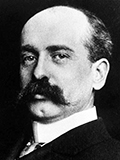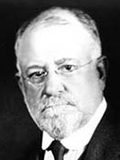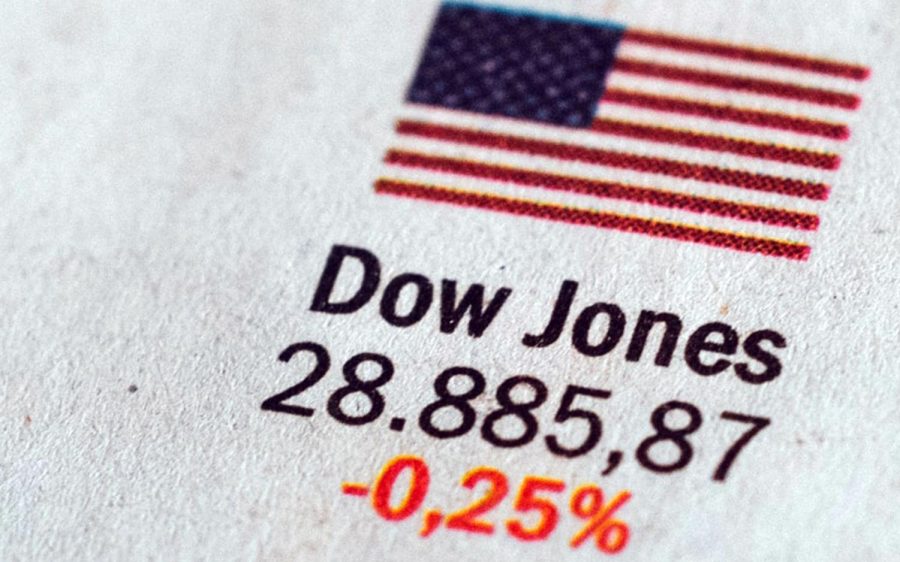Historically Speaking: When Mr. Dow met Mr. Jones
Whether you’re a small investor or a company CEO, or neither, monitoring the daily Dow Jones Industrial Average is a way of keeping tabs on the pulse of the nation’s business health. (Photo by Markus Spiske via Unsplash)
September 29, 2022
Nearly everyone has asked: What is or was a Dow Jones Average? Is it a real person, place or just a business moniker? Well it’s all of the above. It is a weekday reading of 30 key American stocks indicating how the nation’s business climate is going.
Charles Dow and Edward Jones met as writers at the Providence Evening Press. Jones could skillfully and quickly analyze a financial report. They were committed to reporting on Wall Street without bias. Other reporters at the time could be bribed into reporting favorably on a company to drive up stock prices. Dow and Jones refused to do so. They believed Wall Street needed a financial news bureau. In 1882, they started the business firm of Dow, Jones & Co.
They developed an intricate system of reporting business news allowing investors and business leaders to keep track of daily stock pricing.
 In 1883, the company started an afternoon two-page business summary called the Customers’ Afternoon Letter. Their daily stock report included nine railroads, one steamship line and Western Union.
In 1883, the company started an afternoon two-page business summary called the Customers’ Afternoon Letter. Their daily stock report included nine railroads, one steamship line and Western Union.
By 1889, the partners realized it was time to transform their two-page news summary into a real newspaper. The they founded the Wall Street Journal daily business newspaper. The first issue of the WSJ appeared on July 8, 1889. It cost 2 cents per issue or $5 for a one-year subscription. Dow was the editor and Jones managed the desk work.
Although his name wasn’t on the Dow Jones logo, Charles Bergstresser became an important founding partner in the company. The business’ early headquarters was located in the basement of a candy store. Bergstresser chose to be a silent partner. His strength lay in his interviewing skills.
The Wall Street Journal has become one of the most respected financial publications in the world. In the WSJ, a series of principles was developed and published for understanding and analyzing market behavior, which later became the groundwork for technical analysis.

Charles Dow often warned his WSJ staff reporters about exchanging slanted stories for stock tips or free stock. Crusading for honesty in financial reporting, Dow published the names of companies that hesitated to give their information about profit and loss. Soon after, the newspaper gained power and respect from the reading public.
Vermont Royster, a later editor of the WSJ, said, “Dow always believed business information was not the ‘private province of brokers and tycoons.’”

Dow saw that a recession at the time was ending, so he came up with a simple tracking system to monitor the nation’s daily business climate. By tracking the closing stock prices of 12 companies, adding up the stock prices and dividing the total by 12, Dow came up with his “stock average.” In 1896 the first such average appeared in the WSJ. Later, the Dow Jones Co. expanded the report to a 20 Active Stock index, which included 18 railroad and 2 non-rail stocks.
Today, it has been expanded and is known as the Dow Jones Industrial Average (DJIA).

By 1898, the WSJ was a morning daily newspaper covering more than just financial news.
Unlike other newspapers, the WSJ reported on such events as war without rhetoric. Dow also added editorial columns called “Review and Outlook” and “Answers to Inquirers” in which readers sent investment questions.
Jones retired in 1899, but Dow and Bergstresser stayed on. Dow continued writing editorials, focusing on the position government held in American business. The WSJ set a precedent in reporting during the election of 1900 by endorsing White House incumbent President William McKinley. He was re-elected with Theodore Roosevelt as vice president.
In 1893, many mergers began taking place, resulting in the formation of huge corporations. These corporations sought markets for their stock shares. The wildly speculative market meant investors needed information about stock activity, hence the active stock listing became vital to investors.
Over the years, many companies have been added or subtracted depending upon a company’s financial position. For example, K-Mart was dropped a few years ago. General Electric and Western Union are the only companies that survived the ups and downs of the many DJIA listings, and they are no longer among today’s 30 Dow industrials.
The current DJIA consists of 30 stocks and remains one of the world’s oldest and most popular stock indices. The stocks of the DJIA listing are:
American Express
Amgen
Apple
Boeing
Caterpillar
Chevron
Cisco
Disney
Dow
Goldman Sachs
Home Depot
Honeywell
IBM
Intel
Johnson & Johnson
JP Morgan Chase
McDonald’s
Merck
Microsoft
Nike
Procter & Gamble
Minnesota Mining & Manufacturing
Salesforce.com
Travelers
United Health
Verizon
Visa
Walgreens
Wal-Mart
To get the “average,” add up the daily stock prices in the listing, then divide by 30. Whether you’re a small investor or a company CEO, or neither, monitoring the daily DJIA is your way of keeping tabs on the pulse of the nation’s business health, and that’s certainly everyone’s business.
My thanks to Ken Klauber of Stifel, Nicolaus for providing the current 30 DJIA listings.
Tom Morrow is a longtime Oceanside-based journalist and author.
Columns represent the views of the individual writer and do not necessarily reflect those of the North Coast Current’s ownership or management.





